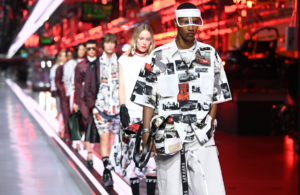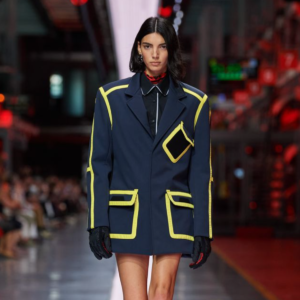Joanna Seddon, Managing Partner, Presciant
Ferrari has just launched an expensive clothing line, an attempt to transform from a product to a lifestyle brand. This is not the first time a car manufacturer has tried this. Mercedes-Benz is collaborating with Louis Vuitton’s Virgil Abloh. Mini had miniskirts, worked with Stella McCartney and Alexander McQueen and still has a fashion arm which promotes young British designers. Ferrari is going further, bringing in an 8-person in-house design team, opening a dedicated store, rebranding its dealerships, featuring its Formula One drivers in ads and putting on its own runway show.
Ferrari’s foray seems to be driven by desperation. Its customer base is aging. EVs are looming. What good is an electric Ferrari that doesn’t go ‘vroom vroom’ when you drive off the lot? Younger generations are more interested in ‘zoom’ than ‘vroom’. They are hailing Ubers and not coming into the brand. As parking restrictions mount, cycling booms, roads become walkways, and restaurants creep out into the streets, it’s almost impossible to have a car in the city anyway. Technologies not cars are the status symbols of today. If a trader gets a $240,000 bonus, they are more likely to buy bitcoin than visit an auto dealer.
As an exercise in brand extension, it is better than what the company was doing before. Ferrari has been late to the game in cleaning up its brand licensing program, continuing to rent its brand out to third parties who stick the shield on cheap perfumes, shampoos, T-shirts, computers and even veils for the Arab female market. Burberry, Gucci and even companies like AT&T realized 10-20 years ago that trying to make a quick buck this way destroys far more brand value than it brings in revenues.
But will it work? Does fashion fit with the Ferrari brand? If you look at the clothes, designed by Rocco Iannone from Armani, they are trying. The outfits pick up Ferrari’s bright red and yellow color palette. The line includes $3,000 leather trench coat that looks like a vintage bucket seat, molded parkas whose shape mimics that of the car and logo-belts modeled on Ferrari seatbelts.
But I think Ferrari is in a bind. The line includes men’s, women’s and children’s wear. A particular goal is to appeal to young women in China. But the brand’s colors and style are very loud, very masculine. Softening it will harm it. Shaping clothes like cars is just odd. The gap between the brand and fashion is very wide. Can this initiative work? Or is it just a vanity project for Ferrari’s owners, the Agnelli family, who have also just bought stakes in Louboutin and Shang Xia, a Chinese luxury brand?
Joanna Seddon is Managing Partner and CEO of Presciant, a new brand consultancy dedicated to optimizing ‘brand alpha’ : helping companies use brand to gain a financial edge. Before this, she was President, Global Brand Consulting at Ogilvy for 10 years. Prior accomplishments include creation of the BrandZ Top 100 global brand valuation ranking for WPP/Kantar. She is a board member and Past President of the AMA New York, Chairs the Marketing Hall of Fame and is the recipient of the 2020 MASB Marketing Accountability Award.
For more information, please visit: www.presciant.com

